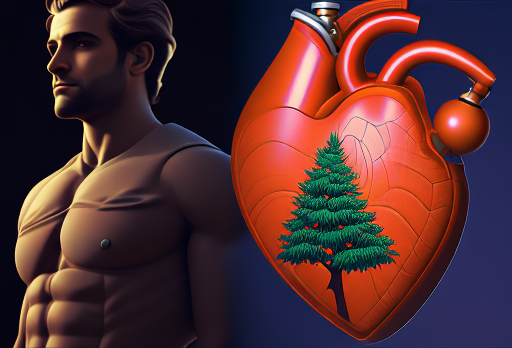We receive a call from a buddy on a typical day. He talks to you about a recent hospital stay that began with a routine fatigue check-up. Surprisingly, however, the test findings confirmed that he had knowingly experienced a silent heart attack weeks prior.
How did something so severe go unnoticed? is the question that remains.
Unbelievably, your body sometimes issues mild warning signs before a silent heart attack. Are cold sweats a sign of something? How is the right arm hurting? Let’s examine the definition of a silent Angina, its warning signals, and ways to avoid it.
A silent heart attack: what is it?
A heart attack generally appears in films in dramatic ways, such as holding the chest, gasping for air, or even passing out. Yet not all Angina are actually so visible.
quiet myocardial ischemia, the medical term for a quiet Angina, frequently exhibits little or no symptoms. It may seem unbelievable, but studies suggest that women are more likely than males to have a heart attack, and that 45% of them are silent.
Silent Angina are especially harmful because these mild symptoms are commonly confused for less serious conditions.
A Silent Heart Attack: What Causes It?

Blood that is rich in oxygen must exist for your heart to work normally. Plaque that is high in cholesterol can cause a blood clot in your coronary arteries, which would stop the blood flow. A silent Angina causes the heart muscle contracting due to a lack of oxygen. Atherosclerosis, or artery-clogging plaque, is frequently the underlying reason, but there are additional beneficial variables as well:
Lifestyle decisions include stress, poor eating habits, and smoking.
Health conditions:
The risk is greatly exacerbated by type 2 diabetes.
A family history of heart disease, pregnancy difficulties like preeclampsia, and even cancers like COVID-19 are examples of uncontrollable circumstances.
Age: Men over 45 and women over 55 are more susceptible to attacks.
Identifying the Warning Indications
A silent Angina may be indicated by a number of important symptoms, according to the American Heart Association:
1. Continuous Flu-like Signs
Do you feel like you’re fighting a cold or the flu all the time? Coughing, throat soreness, and nausea are a couple of symptoms that may indicate a heart problem if they last in excess of a few weeks.
2. Inexplicable Bloating
Your hands, feet, or belly may swell as a result of fluid accumulation brought on by cardiac problems. Do your clothes feel tighter? Perhaps it’s time to see your doctor.
3. Sweating Too Much
Sweating is common in hot temperatures and during physical activity. However, if you’re sweating much without exerting yourself or in a chilly setting, it might indicate a heart problem.
4. Heartburn and Chest Pain
Even while eating spicy food might cause heartburn, you shouldn’t disregard chronic chest pain. One of the most common signs of a his this attack.
5. Diabetic neuropathy
Nerve damage from advanced diabetes frequently makes it more difficult to feel pain. Diabetics may mistake the pressure, fullness, or squeezing that distinguishes a Angina for stomach pain.
6. Pain in Odd Locations
Pain from a silent heart attack does not typically remain in the left arm. It may spread to the back, mouth, teeth, belly, or right arm. Pain in the chest, known as angina pectoris, might frequently resemble an apparent backache.
7. Severe Fatigue
Experiencing odd fatigue with little effort? It can be a sign that your heart isn’t beating effectively.
How to Respond to a Possible Silent Angina
Don’t disregard odd symptoms. Get medical assistance right away. Doctors may use:
ECGs are used to measure cardiac activity.
heart biomarker detection via blood testing.
imaging procedures for more accurate the diagnosis, such as MRIs or CT scans.
To find blockages, use coronary angiography or stress tests.
Blood thinners like aspirin or more sophisticated procedures like stents, angioplasty, or bypass surgery may be deployed as part of the treatment.
The Repercussions of a Quiet Angina
You’re dangerous just because you survived a silent Angina. It can cause problems like arrhythmia (an abnormal heartbeat) or even stroke, and it raises your risk of having another heart attack by 35%.
Ways to Lower Your Risk
The key is prevention. Here are a few ideas for heart protection:
Remain Active: Begin with leisurely strolls and progress to yoga, Zumba, or even jogging.

